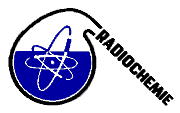Prof.
Karin Popa
("Al.I. Cuza" University, Department of Chemistry)
22/04/2010, 03:00
Chemistry of Actinide and Trans-actinide Elements
Verbal
Data on structure and properties of actinide phosphates are needed for the development of phosphate ceramics envisaged as possible hosts for long-term sequestration of actinides generated by the nuclear fuel cycle. In that aim an extensive study on the crystal structures, thermal stability, and thermodynamic properties on a number of crystalline trivalent and tetravalent actinide phosphates...
Dr
Astrid Barkleit
(Institute of Radiochemistry, Forschungszentrum Dresden-Rossendorf)
22/04/2010, 03:30
Chemistry of Actinide and Trans-actinide Elements
Verbal
It is well-known that microorganisms play an important role in bioremediation. Because of the high retention capability of heavy metal ions, they significantly influence mobilization and immobilization of cations in soils. The prediction of the radionuclide transport in the environment and the improvement of technical bioremediation strategies require a detailed understanding of the binding...
Dr
Henry Moll
(Forschungszentrum Dresden-Rossendorf e.V.)
22/04/2010, 03:45
Separation Methods, Speciation
Verbal
The aerobic groundwater bacterium Pseudomonas fluorescens (CCUG 32456) isolated from the aquifers at the Äspö Hard Rock Laboratory, Sweden secretes siderophores of the pyoverdin-type. Besides iron(III), these unique bioligands are also able to form strong complexes with actinides (e.g., U(VI), Np(V), and Cm(III)) [1-3]. For U(VI) and Np(V) we could show that mainly the catecholate and to less...

